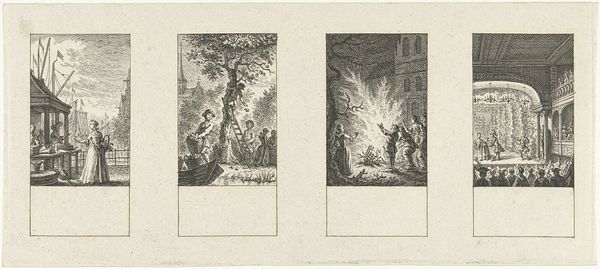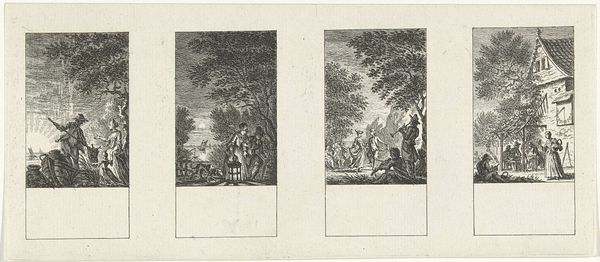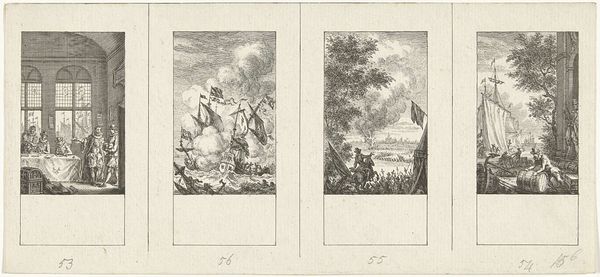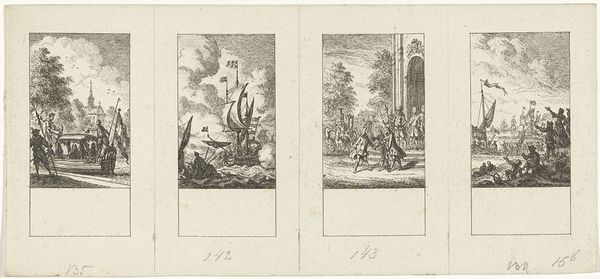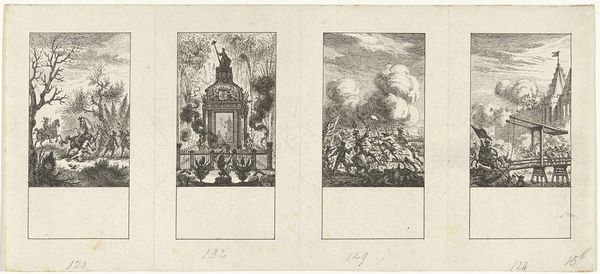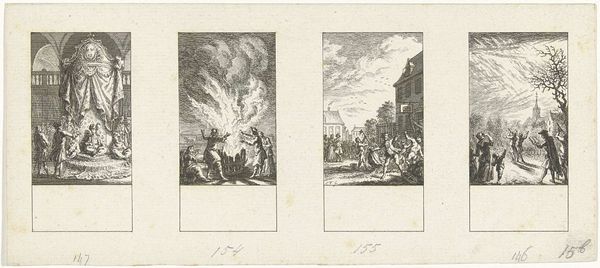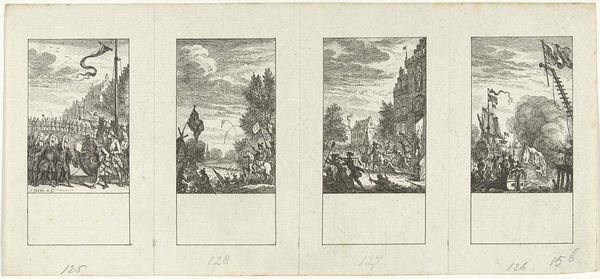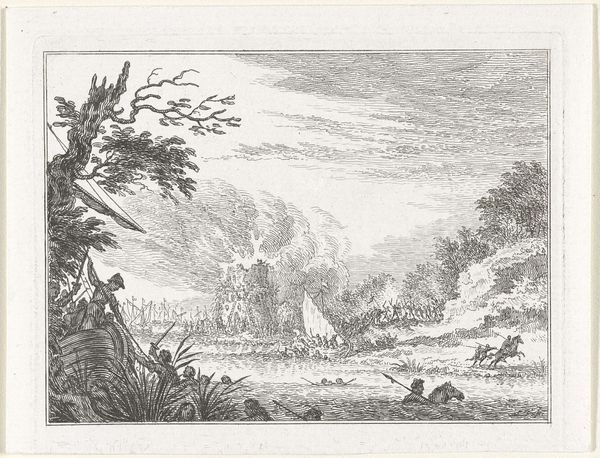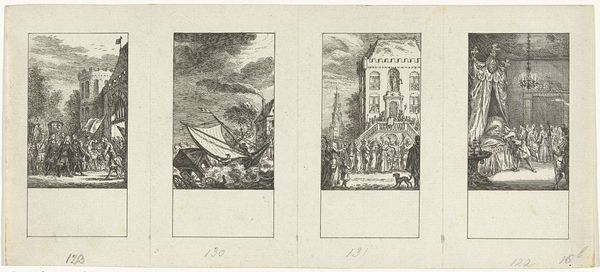
print, etching, engraving
#
baroque
#
dutch-golden-age
# print
#
etching
#
etching
#
history-painting
#
engraving
Dimensions: height 112 mm, width 252 mm
Copyright: Rijks Museum: Open Domain
These four scenes from Dutch history were etched by Simon Fokke in the 18th century. Using a metal plate, acid, and a sharp tool called a burin, the artist incised lines to hold ink and create the image. This printing process was labor-intensive, yet it allowed for the widespread distribution of imagery. Looking closely, one notices the quality of line and fine detail achieved, particularly in the depiction of human figures, the textures of the natural environment, and architectural forms. The tonal range from light to dark creates a sense of drama and depth. Etching techniques, like cross-hatching, build up the shading. In the 1700s, printed images played a vital role in shaping public opinion and national identity. The medium was suited to spreading narratives and bolstering patriotism. Fokke's scenes reflect a broader historical context of print culture as it influenced social and political discourse, underscoring the importance of understanding not only the "what" but also the "how" and "why" of artistic creation.
Comments
No comments
Be the first to comment and join the conversation on the ultimate creative platform.
